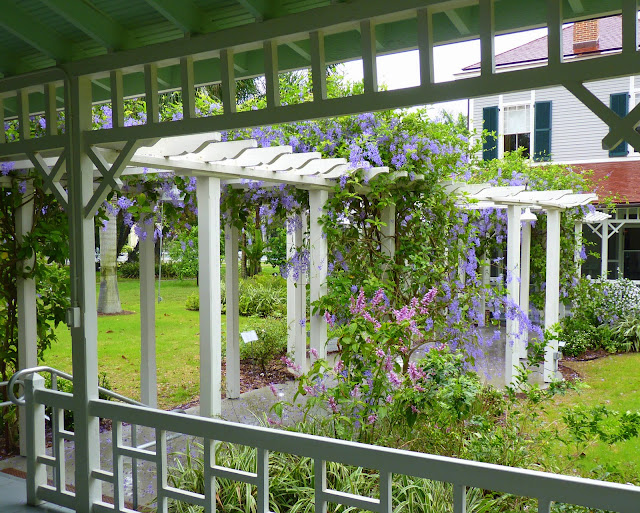As mentioned the other day, we recently took a little field trip and visited several new native plant nurseries along the way. This is the third of three posts detailing those nurseries and the plants we bought there.
On our way to visit
The Butterfly Estates in Fort Myers, we made one last stop at a native plant nursery. It was a darn good thing we had GPS, because this place was tricky to find for out-of-towners.
All Native Garden Center* is near one of the airports, so not exactly in the most scenic part of town, but of all the nurseries we visited on our travels, this was by far our favorite.
We knew we were in luck when we pulled in, because a supplier truck was parked outside and new plants were being unloaded. Special areas were set up with butterfly nectar and host plants, and all plants were clearly labeled with names and growing needs. We'd only looked around a few moments when a nursery worker approached to ask if we were looking for anything in particular. When I asked for
wild petunia (Ruellia humilis), which we hadn't been able to find anywhere else on this trip, her eyes lit up and she ran to bring me some, fresh off the truck (that's it on the left, planted in a shady spot under a tree, where it will do best). When I told her I was a butterfly gardener, she immediately began to show me other plants I might want or need, telling me her own experiences with the plants and asking what might work in my yard. Before long, we had loaded up a cart, and could have bought much more if we hadn't had to schlep it all back to Tampa.
So, what did we get, aside from the wild petunia? Well, first we found some
Scorpion Tail (Heliotropum angiospermum), a very cool member of the heliotrope family. It's not a big plant, growing to a maximum of 2 feet, but its delicate little flowers are very attractive to the smaller butterflies like blues and skippers. It does well in sun or shade, and is fairly drought-tolerant. We planted ours in the butterfly garden.
The next plant was one I was not familiar with, but the nursery worker assured us was a natural in a butterfly garden. It's called
Yellowtop (Flaveria linearis) and is really more of a zone 10 plant, but we decided to give it a try since we've had reasonably good luck with zone 10 plants before (not this past winter, of course), and we can just plan to give it a little protection if we need to. Even if it does die back in a freeze, it should re-grow from the roots, so it seemed work the risk.
When it blooms this summer and fall, the bright yellow flat-topped flowers will attract butterflies by the barrelful, so we planted it in the butterfly garden. It can grow 2-4 feet tall, and likes full to partial sun. It reseeds readily, so hopefully we'll have more of these plants by next year. We'll post some pictures of it once it starts to bloom.
Our helpful All Native employee also suggested we try some
pennyroyal (Piloblephis rigida). This drought-tolerant wildflower blooms year-round, and will tolerate a light frost, though it may die back to the ground in a heavier freeze. The flowers are a light lavender and are attractive to butterflies, so this was another addition to the butterfly garden.
Our final purchase was a bit of an impulse buy. We had been discussing how much we loved silver buttonwood for its silvery leaves, and the All Native worker showed us some
Sea Lavender (Argusia gnaphalodes), also called Sea Rosemary. The photo doesn't do it justice - the soft foliage of this plant almost seems to glow silver in the sun. It is a coastal plant, growing wild on sand dunes from Central Florida south, so it is very salt tolerant (not that that's an issue in My Florida Backyard), and can grow several feet tall given the opportunity.
If the beauty of this plant weren't enough to get us, the fact that it's rare and endangered certainly was. It's very difficult to find, both in the wild and from plant nurseries, so we really couldn't pass up a chance to bring this unusual native to our own yard. We planted it in a full sun spot in the backyard where we can admire the silvery leaves up close.
And that wrapped up our native plant shopping. All of the nurseries we visited were nice, but All Native was the best. The staff was helpful, the plants were healthy, and the selection was great. Prices were a little high, but no more so than other native plant nurseries - these sellers and growers don't have the high volume that allows other nurseries to keep prices down. Still, we always feel the extra cost is worth it for native plants; we have a much higher success rate with them, and it feels good to know My Florida Backyard is helping to restore some native habitat for the native wildlife.
* Tip: If you visit All Native's website (nolawn.com - how cool is that?), use Internet Explorer as opposed to Firefox or another browser.







































